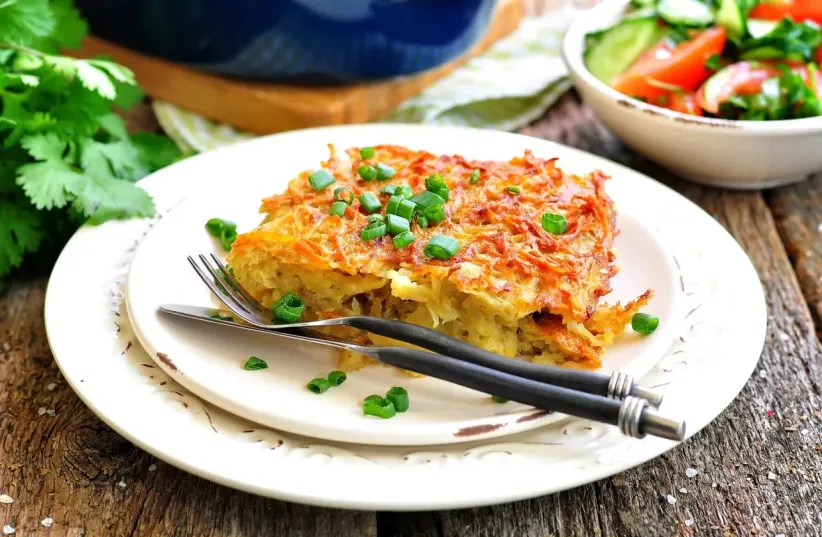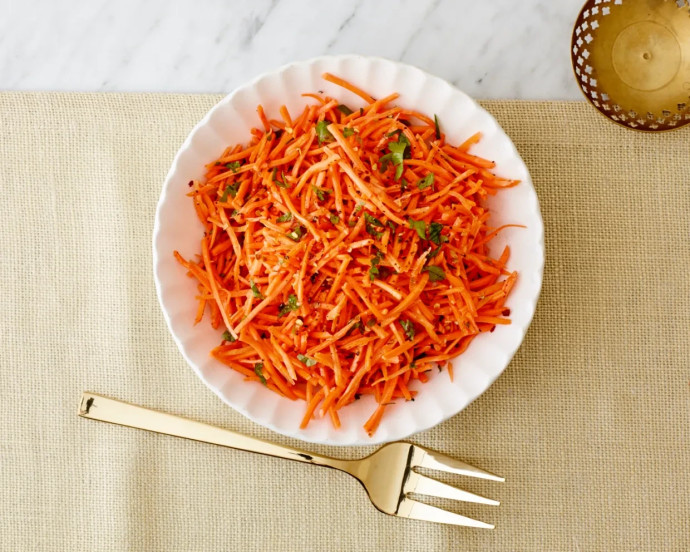As Passover and Easter Sunday overlap on April 17 this year, now is a perfect opportunity to host an interfaith Passover-Easter meal.
Passover is a major eight-day Jewish holiday in which Jews tell the story of the Israelites’ Exodus from Egypt and journey to the land of Israel that was promised by God. It is the story of freedom from slavery and is observed by a Seder on the first night in Israel, which falls on April 15 this year, and the first two nights in the Diaspora.
Jews celebrate Passover by refraining from eating leavened bread (chametz), yeast and some grains – symbolizing the bread that did not have time to rise as the Jews dramatically fled from Egypt.
Leading up to Easter, many Christians will recall what it is like to refrain culinarily, as many go without certain rich foods on Lent – a period of mourning leading up to Easter that commemorates the 40 days Jesus spent fasting in the desert.
Despite the culinary limitations, many interfaith opportunities exist in the overlap of the two holidays. At an interfaith meal, Christians and Jews can find what connects – rather than divides – them.
Jamie Geller, American Israeli food writer, chef and businesswoman said that she understands the joy and opportunity in bringing people together through food.
“As the very old but very true saying goes, the way to a person's heart is through their stomach,” she told The Jerusalem Post. “Food has the unique power to open hearts and minds, and cooking and sharing a meal is a beautiful expression of warmth and love.”
Passover, she continued, “makes a point to leave the door open, inviting guests to join if they don’t have a Seder to go to. It’s a time for sharing what we have and joining together in celebration.”
Geller related the fact that the overlap could be used as an opportunity to break “bread” and bring people closer.
“We are more alike than we are different, and food has the power to break down barriers and bring us together around the table,” she said. “It's the ultimate unifier… creating lasting memories that are very visceral as good food and conversation stimulate all the senses.”
Indiana native Ann Becker was raised in a secular Christian home in the 60s. To her family, Easter was a “holiday revolving around the Easter bunny.”
When she married her Jewish husband, they committed to raising their children Jewish, but still celebrated secular Easter, with “baskets of chocolate found by following a jellybean trail from one’s bedroom door.”
Rachel Walsh-Mattson, originally from Maine and currently living in Virginia, grew up with interfaith parents. Her family celebrated each holiday, but her parents were “very good at keeping them separate.”
On years that the holiday overlapped, she said, “we would have matzoh brie for breakfast, go to Easter mass, come home and eat candy and hardboiled eggs for lunch, and then have an Easter dinner of lamb instead of ham.”
She recalls one year when Passover fell after Easter, “I used left over Easter eggs as the hardboiled eggs for the Seder.”
Another year, when the Seder was the day before Easter and her children had leftover parsley, she used the fresh parsley instead of the plastic Easter grass to lines her Easter baskets. Today, she and her family celebrate Easter with Christian friends, and one year when it overlapped, she asked her friends if she could hold a Seder for her children.
“It was a hit,” said Walsh-Mattson, not just with her children but with her friends and their kids as well. Her friends even asked her to continue to host a Seder together in the following years, as they enjoyed the experience. Walsh-Mattson hopes that her children experience “both sides of their heritage” and that they, most importantly, “believe in something bigger than themselves and are good people.”
No matter one’s connection with each holiday, celebrating in a way that brings different people together can be wonderful. For those hosting Jews over Passover, it is recommended to ask them what their diets may or may not exclude, as traditions and stringencies vary.
The following are some recommended dishes for each course that are kosher for Passover and fitting for Easter:
Appetizer: Deviled and braised eggs
Eggs are a central commonality that Jews and Christians share on their festivals of Passover and Easter, representing the circle of life. “Passover, also known as Chag HaAviv, celebrates Spring. The leaves have started to turn green; the flowers are in bloom and the stormy skies have cleared to a beautiful blue (as the rainy season has officially passed here in Israel). Eggs are symbolic as a sign of renewal and representative of the circle of life,” explained Geller.
In Christianity, eggs symbolize rebirth, resurrection and the coming Spring season. The chocolate “easter egg” was popularized in the 19th Century (just in time for the end of their 40-day Lenten abstention from chocolate), and there is another tradition to dye real hard-boiled eggs and hide them for children to find.
A roasted or hardboiled egg is one of the six items on the seder plate, symbolizing the festival sacrifice that was offered at the Temple in Jerusalem, and are also eaten with salt water.
“In addition to the egg having a coveted spot on the seder plate, it is customary at many Jewish seders to eat hard boiled eggs at the start of the meal. Another culinary tradition includes making braised eggs that look marbled by cooking them with onion skins,” added Geller.
Jamie’s Braised Hard-Boiled EggsJamie’s Assorted Deviled Eggs
Side Dish: Potato Kugel
Flourless potato kugels are common as a Passover dish, but did you know that a savory potato pudding called “kugelis” is also popular on the Lithuanian Easter dinner table?
Both are a dense potato casserole, and in Lithuania, served with applesauce or sour cream (like the Jewish latkes). Make the potato kugel out of grated potatoes, onions, eggs, oil, potato starch, salt and pepper.
Jamie’s Passover Kugel RecipeJamie’s Potato Kugel Cups
Side Dish: Sweet, Savory, or Spicy Carrots
Whether sweet, savory or spicy, carrots make for a delicious Kosher for Passover side dish. The Carrots are also perfect for Easter – because it is a favorite of the Easter Bunny, the beloved folkloric Rabbit that brings Easter eggs in a basket to children.
Though a sweet carrot stew (tzimmes) is traditionally a dish that is served on the Jewish new year of Rosh Hashanah, carrots often end up on the Passover table as well. Add ingredients like cinnamon, honey, orange juice and raisons for a sweet carrot stew.
If you prefer a savory dish, try Jamie’s garlic roasted carrots, or for a dish that represents Israeli Jewish culture, a Yemenite carrot dish. According to Geller, “Israeli food culture is as diverse as the numerous countries the Jews of the diaspora have lived in. It's important to recognize our sojourn in the diaspora, the traditions of Jews of color as well as lesser-known practices and customs to ensure everyone feels represented in the collective modern Jewish story.”
This Passover, Geller has made a point of featuring charoset recipes from around the world and a “Jewmaican Passover Story & Seder Menu” to capture the unique culinary traditions of the rich and diverse Jewish people and heritage.
Jamie’s Garlic Roasted CarrotsJamie’s Yemenite Carrots
Main Dish: Roasted Lamb
Lamb is a hallmark dish seen at both Easter celebrations and on the Passover Seder plate (as a roasted lamb shank bone). The roasted lamb dinner served on Easter Sunday is, in fact, based on the Passover tradition. It is the only element of meat on the Seder plate and symbolizes the Passover sacrifice whereby the blood of a sacrificed lamb was used to mark the enslaved Israelite’s doorposts so the “angel of death” would “pass over” and spare their first-born males during the 10th plague.
Jamie Geller Lamb Roast with Rosemary and Sage Jamie’s Roasted Lamb with Pomegranate and Wine
Dessert: Lemon Bars
Lemon bars are a popular choice for dessert during Passover, as they are often made without flour, but are delicious and reminiscent of Spring. Lemon bars are perfect as a sweet treat that can be made with a coconut-based crust that is perfect for both Easter and Passover.
Jamie’s Passover Lemon BarsJamie’s Gluten-Free Lemon Bars
Want more Passover recipes? Click here.

